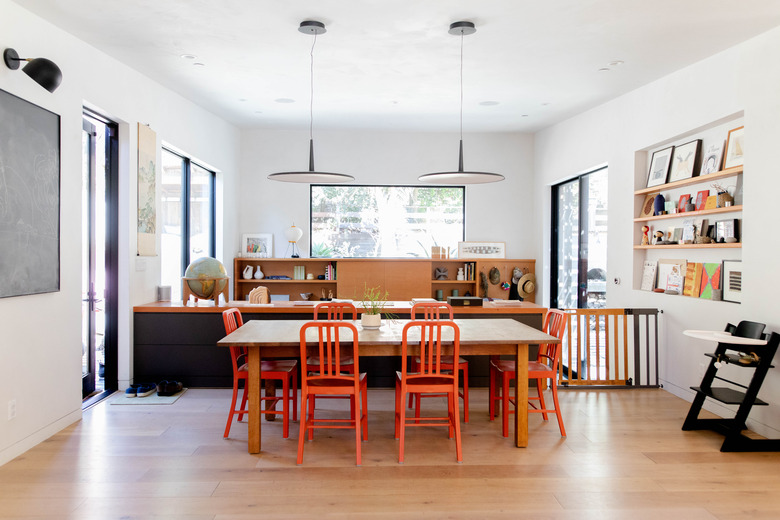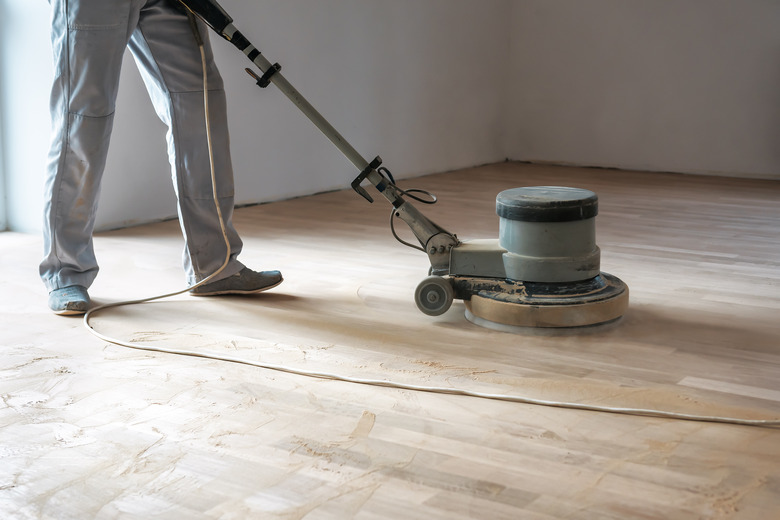Brazilian Maple Flooring: A Homeowner's Guide
As with other wood species, quite a few options are available when it comes to varieties of maple hardwood flooring. While most maple flooring in the United States is made from the more readily available North American varieties of maple, Brazilian maple is also an attrative and durable option if you can find it stateside. It's also favored by wood turners and furniture makers.
Brazilian Maple Hardness and Origin
Brazilian Maple Hardness and Origin
Depending on the source, Brazilian maple ranks from 1,500 to 1,987 on the Janka scale, which lists woods based on hardness. The higher the number, the harder the wood and the less susceptible it is to dents. Brazilian walnut, also known as ipe, is one of the hardest woods at 3,680 on the Janka scale, while Brazilian cherry, or jatoba, has a Janka hardness of 2,350. Hard maple, which refers to many maple varieties considered hardwood in North America, ranks at 1,450 on the Janka scale, so it's a little softer than Brazilian maple and considerably softer than Brazilian cherry and Brazilian walnut.
Brazilian maple, also known as guatambu, pau marfim or ivorywood, comes from Latin America and is more commonly used there than farther north since it's readily available in that locale. This wood is also called Patagonian maple if it comes from Paraguay, according to Wood Flooring International. By any name, Brazilian maple wood is more commonly used for furniture than for flooring in the United States.
Brazilian Maple Hardwood Flooring
Brazilian Maple Hardwood Flooring
As a flooring option, Brazilian maple looks quite a bit like American maple or even birch but slightly more yellow. Both the sapwood and heartwood feature a tight grain structure, and occasional tight swirls or burls may be present. This wood is used where light-colored floors are desired, and if available, it may be chosen over American maple varieties because of its durability and resistance to wear.
While this wood is a durable and attractive flooring choice for most rooms, it's quite sensitive to changes in humidity, so it's not ideal for bathrooms or basements. The same holds true for floors made of North American maple. Hardwood flooring of any sort is usually not a good choice for a full bathroom, as very few woods resist the levels of moisture that are common in a room with a steaming hot shower.
Expect to spend a premium for Brazilian maple hardwood flooring, as it's relatively hard to find in the United States, although it may be available in limited form from time to time as reclaimed lumber. Major flooring retailers and big-box home improvement stores do not usually have it in stock. Even retailers that carry other exotic hardwood species do not typically carry Brazilian maple since it is a close match for North American maple varieties.
Domestic maple is usually sustainably harvested to help preserve the ecosystem, whereas it may be more difficult to track the origin of Brazilian maple. For any domestic maple hardwood flooring, expect to spend $6 to $14 per square foot installed or $3 to $6 per square foot for the wood alone.
Finish and Plank Options
Finish and Plank Options
Since Brazilian maple is an exotic hardwood that's most commonly used as a substitute for North American maple, most flooring companies stateside do not even mention it as an option. Those that do may not list size or finish options, possibly because they don't carry it unless they've acquired an overstock from an importer.
If you are able to find Brazilian maple flooring, expect to find it in common maple plank widths such as 2 1/4 inches, 3 inches, 4 inches and potentially wider if purchased from a wide-plank-flooring specialist. In reclaimed form, small quantities of the wood may be available in less-common sizes.
Purchasing your Brazilian maple prefinished may cost more than the same boards unfinished, but ultimately, the extra cost is worth it. Factory-finished boards typically have an aluminum oxide urethane coating that is far more durable than the typical finish applied after installation (using the traditional technique of finishing wood flooring on-site), so much so that some manufacturers offer a 25-year warranty. Finishing the floor after installation may offer a more uniform, smooth look, but it also adds to the expense and the post-installation wait time before you can add furniture back into the room.
Maple Hardwood Floor Care
Maple Hardwood Floor Care
No matter what type of maple, your hardwood care requires an appropriate cleaner that won't harm the wood or dull or damage the finish. Standard all-purpose floor cleaners often contain chemicals that aren't ideal for wood floors.
Sweep the floor or dust with a dry microfiber dust mop every couple of days to remove dust and fine particles. Keep door mats near entry doors to avoid tracking in dirt and gravel. Ideally, it's best to kick off your shoes after wearing them outdoors. If a guest or a pet tracks mud or water inside, wipe up the mess immediately with a soft cloth. It's easier to clean while it's still wet, plus it helps prevent the moisture from soaking into the wood.
Wash the floor as needed once in a while using the least amount of moisture possible. If the floor isn't very dirty, a damp microfiber floor-cleaning pad may do the trick. If a cleaning product is needed, opt for a gentle cleaner such as those offered by Bona. Other cleaning products and even some homemade cleaning solutions can dull the wood's finish. When wiping down the floor, keep the mop just damp and never wet enough to leave puddles behind.
Solid vs. Engineered Brazilian Maple
Solid vs. Engineered Brazilian Maple
While most common hardwood floor types offer a similar version in engineered flooring, this is not the case with Brazilian maple, at least not in the United States. Since this wood is so similar to domestic maple, there's no reason for engineered flooring manufacturers to pay extra for a wood that is just a little more durable but otherwise nearly identical in appearance.
Engineered domestic maple flooring is readily available, however. Each engineered maple floor plank has several layers of other woods or fiberboard for all but the surface layer, which is maple. The end result is a strong flooring option that is more resistant to humidity fluctuations than solid maple, making it suitable for some basements and bathrooms. Engineered maple averages $3 per square foot for the boards alone.
Read the product specifications before purchasing engineered maple because some engineered flooring uses fiberboard rather than layers of wood for the lower layers. Fiberboard is more susceptible to water damage. The top-layer maple veneer may be incredibly thin on some engineered floors, which means it may wear through to the secondary layers if you attempt to sand and refinish it more than once.

